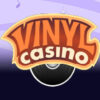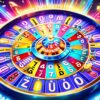Welcome to our in-depth exploration of the intriguing world of professional poker players and the controversial practice of card counting. There is much speculation and curiosity surrounding whether these skilled individuals employ card counting techniques to gain an advantage in the game. In this article, we will delve into this topic and shed light on the truth behind the practice of counting cards in poker.
Key Takeaways:
- Professional poker players may or may not count cards as a part of their strategy.
- Card counting is commonly associated with games like blackjack, but its use in poker is more complex and controversial.
- The case of Mike Postle and the observations of Veronica Brill bring attention to the potential presence of card counting in poker.
- Poker players employ various techniques, including mathematics, neuroscience, and body language analysis, to gain an edge in the game.
- The decision to use card counting techniques in poker depends on individual players’ skills, strategies, and risk tolerance.
Now, let’s embark on this journey to uncover the truth about professional poker players and their approach to card counting.
The Game of Poker: A Brief Overview
Before we delve into the question of whether professional poker players count cards, it’s important to have a basic understanding of the game itself. Poker is a strategic card game that combines skill, strategy, and luck. It’s played with a standard deck of 52 cards and involves multiple rounds of betting. The objective is to have the best hand or to convince other players to fold, thus winning the pot.
Professional poker players employ various methods to gain an advantage over their opponents. One such method is card counting, which is often associated with games like blackjack. Card counting involves keeping track of the cards that have been dealt to gain insight into the remaining deck. In poker, however, card counting becomes more complex due to the larger number of cards in play and the constantly changing nature of the game.
To maximize their advantage, professional players utilize different card counting techniques and strategies. These methods allow them to gauge the probability of certain cards appearing and make informed decisions based on this information. It’s important to note that card counting is not a foolproof strategy and can be challenging to implement effectively in the dynamic environment of a poker game.
| Advantages of Card Counting in Poker | Disadvantages of Card Counting in Poker |
|---|---|
| Increased knowledge of card probabilities | Difficult to implement effectively |
| Potential for better hand selection | Requires advanced mathematical skills |
| Ability to make more informed decisions | Can be time-consuming and mentally taxing |
While card counting can provide professional players with an advantage, it’s important to remember that poker is a game of skill, strategy, and adaptability. Successful players rely on a combination of factors, including their ability to read opponents, analyze betting patterns, and make calculated decisions in real-time. Card counting, while a potential tool in their arsenal, is just one aspect of their overall approach to the game.
The Controversy Surrounding Card Counting in Poker
Card counting is a technique commonly associated with games like blackjack, where players keep track of the cards that have been dealt to gain insight into the remaining deck. In poker, card counting is a more complex and controversial practice. Some argue that it can be used to gain an advantage, while others believe it is not effective in the game.
The controversy surrounding card counting in poker stems from the nature of the game itself. Unlike blackjack, where players compete against the dealer, poker is a game of skill and strategy between players. The presence of multiple opponents and the incomplete information about their hands make it difficult to accurately track the cards and calculate the odds.
Furthermore, poker often involves multiple decks being shuffled together, which makes card counting even more challenging. The constant reshuffling and the unpredictability of the cards make it nearly impossible to consistently apply card counting techniques. While some players may attempt to use card counting strategies in poker, its effectiveness and impact on the game remain highly debated.
| Pros of Card Counting in Poker | Cons of Card Counting in Poker |
|---|---|
| 1. Provides a potential advantage by gaining insights into opponents’ tendencies. | 1. Difficult to execute due to incomplete information and multiple opponents. |
| 2. Helps in detecting patterns and making more informed betting decisions. | 2. Involves complex calculations that can be distracting and time-consuming. |
| 3. Can be used strategically in certain situations to increase the chances of winning. | 3. Limited effectiveness against shuffled decks and unpredictable gameplay. |
Card counting in poker remains a subject of debate and personal preference among professional players. While some may argue that it provides an edge in certain scenarios, others believe that the complexities and uncertainties of the game make it an unreliable strategy. Ultimately, the decision to employ card counting techniques in poker depends on individual players’ skills, strategies, and risk tolerance.
The Story of Mike Postle: A Poker Phenomenon
The world of professional poker was taken by storm when the name Mike Postle started making headlines. Postle, a relatively unknown player at the time, suddenly caught the attention of the poker community with his remarkable winning streaks. His consistent success raised eyebrows and sparked speculation about his extraordinary skills and methods.
What made Postle’s story even more intriguing was the suspicion that he might be utilizing card counting techniques to gain an edge over his opponents. Card counting, while commonly associated with games like blackjack, is a controversial practice in poker. Many believe that it is not effective or feasible due to the complexity and constantly changing nature of the game.
However, Postle’s uncanny ability to make accurate decisions and his unorthodox playing style led some to believe that he had found a way to maximize profits through card counting in poker. His story highlights the potential benefits and controversies surrounding this technique in the world of professional poker.
The Unforgettable Winning Streak
„Postle’s success on the poker table was nothing short of extraordinary. He seemed to have an uncanny ability to predict his opponents’ moves and make the right decisions at crucial moments. His winning streak was simply unforgettable.” – Anonymous Poker Pro
Postle’s outstanding performance caught the attention of fellow players, commentators, and even the media. Many wondered how he could consistently outplay his opponents and make seemingly impossible decisions with such accuracy. The possibility of card counting being the secret behind his success started to gain traction.
Card Counting Tips for Professional Poker Players
While card counting in poker remains controversial, there are certain tips that professional players can consider if they wish to explore this strategy:
- Understanding the game thoroughly: Before attempting card counting, it is essential to have a deep understanding of the rules, strategies, and nuances of poker.
- Mastering mental calculations: Card counting requires the ability to perform quick mental calculations to keep track of the cards and assess their impact on the remaining deck.
- Staying focused and disciplined: Card counting demands utmost concentration and discipline. Any distractions or errors in counting can lead to inaccurate readings and flawed decision-making.
- Adapting strategies to different variations: Different poker variations may have unique characteristics and rules that can affect the effectiveness of card counting. Adapting strategies accordingly is crucial.
By following these tips, professional players can potentially maximize their profits through card counting in poker. However, it is important to note that card counting is not foolproof and may not guarantee success in every situation. It remains a skill that requires expertise, practice, and careful execution.
A Controversial Game Changer
The story of Mike Postle serves as a reminder of the ongoing debate surrounding card counting in poker. While some believe it to be a game-changing technique that can lead to substantial profits, others argue that it is not a reliable or viable strategy in the complex world of poker.
Regardless of whether or not professional players count cards, Postle’s remarkable winning streak continues to captivate the poker community and fuel discussions about the boundaries of skill and strategy in the game.
| Pros of Card Counting in Poker | Cons of Card Counting in Poker |
|---|---|
| Maximizes profits by gaining an edge over opponents | Effectiveness can be influenced by game variations and rule changes |
| Enhances decision-making by providing insight into the deck | Requires exceptional mental calculations and focus |
| Can create a psychological advantage over opponents | Controversial practice that may lead to suspicion and scrutiny |
The Observations of Veronica Brill: A Suspicious Surrender
Veronica Brill, a renowned poker player and commentator, observed a particular hand during a live poker game that raised suspicions about card counting. In this hand, Mike Postle, a player known for his exceptional winning streak, made an unexpected decision to fold against the odds. Brill’s keen eye for detail and understanding of the game led her to question the motive behind Postle’s unusual move.
Brill’s observations not only piqued her curiosity but also garnered attention from the poker community. The incident prompted her to delve deeper into the possibility of card counting in live poker games. She began analyzing Postle’s gameplay and looking for patterns and cues that could indicate the use of card counting techniques.
As Brill continued to examine the hand and Postle’s overall performance, she noticed several instances where his decisions seemed uncannily aligned with the knowledge of the cards yet to be revealed. These patterns, along with the unusual fold, further fueled suspicions of card counting, leaving many questioning the legitimacy of Postle’s poker skills.
„I couldn’t ignore the anomalies I observed in that hand,” Brill said. „It made me wonder if there was more to Postle’s success than meets the eye. As a poker player myself, I understand the importance of reading opponents, but his consistency and unusual actions raised red flags.”
Veronica Brill’s observations shed light on the potential presence of card counting in live poker games. Her scrutiny of Mike Postle’s gameplay and the anomalies she detected have sparked a broader discussion within the poker community about the use of card counting techniques and their impact on the integrity of the game.
Molly Bloom’s Underground Poker Scene: Revealing Celebrity Players
In the underground world of high-stakes poker, Molly Bloom orchestrated exclusive and secretive poker games that attracted wealthy individuals and even celebrities. Among the famous faces that frequented these clandestine gatherings were Tobey Maguire, Leonardo DiCaprio, and Ben Affleck. While much attention has been given to the participation of these celebrity players, their involvement also raises questions about the potential use of card counting techniques in these exclusive poker circles.
The presence of professional poker players in Molly Bloom’s underground poker scene adds an intriguing layer to the discussion of whether card counting is employed in the game. These elite players possess a wealth of experience and knowledge, making it plausible that they may utilize advanced strategies such as card counting to gain an edge over their opponents. However, it is important to note that without concrete evidence or firsthand accounts, it remains speculative as to whether or not card counting was actually practiced in these private games.
„Molly Bloom’s poker games were a hotbed of excitement and intrigue, attracting some of the biggest names in Hollywood. While it is tempting to speculate about the strategies employed by these celebrity players, it is important to remember that poker is a game of skill, strategy, and chance. The presence of professional poker players merely highlights the competitive nature of the game and the dedication required to excel at the highest level.”
Ultimately, the question of whether professional poker players count cards in Molly Bloom’s underground poker scene raises more intrigue than it provides definitive answers. The secrecy surrounding these games, coupled with the discreet nature of card counting techniques, ensures that the truth may never be fully revealed. Nevertheless, the allure and mystique of the underground poker world continue to captivate the imagination of poker enthusiasts and curious onlookers alike.
The Table: Celebrity Players in Molly Bloom’s Underground Poker Scene
| Player | Profession | Notable Achievements |
|---|---|---|
| Tobey Maguire | Actor | Best known for his role as Spider-Man in the film franchise |
| Leonardo DiCaprio | Actor | Academy Award-winning actor for his roles in films like „The Revenant” and „Titanic” |
| Ben Affleck | Actor | Academy Award-winning actor and director, known for his roles in „Good Will Hunting” and „Argo” |
Table: Notable celebrity players in Molly Bloom’s underground poker scene.
The Science behind Professional Poker Players’ Minds
Understanding the neuroscience of poker provides valuable insights into the cognitive processes of professional players and how they calculate risks. Researchers have conducted studies using MRI scans and physiological monitoring to examine the inner workings of poker players’ minds during gameplay.
The findings reveal fascinating aspects of the brain’s activity and its impact on decision-making. Neuroscientists have observed heightened activity in the prefrontal cortex, the region responsible for complex decision-making and risk assessment, among professional players. This suggests that these individuals are actively engaging in strategic thinking and analyzing the potential outcomes of their actions.
„The prefrontal cortex is a critical area of the brain involved in higher-level cognition and executive functions. Its activation during poker gameplay indicates the intense mental calculations and risk assessments happening in the minds of professional players.”
In addition to the prefrontal cortex, the amygdala, which is responsible for processing emotions, has also been found to play a role in poker. Studies have shown that professional players exhibit greater emotional control and reduced amygdala reactivity, allowing them to make more rational decisions even in high-stress situations.
The Complexities of Risk Calculation
Poker is a game of calculated risks, and professional players have developed a remarkable ability to assess probabilities and make strategic decisions based on the potential outcomes. By using mathematical calculations and statistical analysis, players like Alex Luneau are able to estimate the likelihood of certain events occurring and adjust their gameplay accordingly.
- Probabilistic Thinking: Professional players are adept at thinking in terms of probabilities. They evaluate the odds of different hands, potential card combinations, and the likelihood of their opponents’ actions. This probabilistic thinking allows them to make informed decisions and maximize their chances of winning.
- Expected Value Analysis: Calculating the expected value is another crucial aspect of risk calculation in poker. This involves assessing the potential gains or losses associated with a particular decision or action. By analyzing the expected value, players can determine whether a move is profitable in the long run.
- Game Theory: Professional players also incorporate game theory principles into their decision-making processes. They consider the actions of their opponents and the potential reactions to their own moves. This strategic thinking enables them to anticipate the moves of others and make optimal choices accordingly.
The combination of neuroscience and risk calculation strategies provides a deeper understanding of the complex mental processes involved in poker gameplay. Professional players navigate a delicate balance between rational thinking, emotional control, and strategic decision-making to achieve success at the poker table.
| Neuroscience Insights | Calculating Risks in Poker |
|---|---|
| Increased prefrontal cortex activity during gameplay | Probabilistic thinking |
| Reduced amygdala reactivity for better emotional control | Expected value analysis |
| Game theory principles |
Calculating Risks: The Role of Mathematics in Poker
When it comes to professional poker players, the ability to calculate risks is a crucial skill that can make all the difference in the game. While luck and intuition play a role, mathematics provides a solid foundation for making informed decisions at the poker table. By utilizing mathematical calculations, players like Alex Luneau can analyze the probabilities and expected values of different actions, helping them make optimal decisions and maximize their chances of winning.
Mathematics in poker goes beyond simple calculations. Professional players employ specialized software and even replay hands to gain insights into their opponents’ strategies and tendencies. By analyzing data and patterns, players can identify profitable opportunities and adjust their play accordingly. This analytical approach allows them to stay one step ahead of their opponents and increase their overall profitability.
Table: The Role of Mathematics in Poker
| Benefits of Mathematics in Poker | Examples |
|---|---|
| Probability calculations | Calculating the odds of hitting a specific card or hand |
| Expected value analysis | Evaluating the potential value of different actions |
| Range analysis | Assessing the possible hands an opponent may have |
| Bankroll management | Using mathematical models to determine optimal bet sizing |
By understanding the mathematical principles behind the game, professional players can make more accurate assessments of risk and reward. This allows them to make decisions based on logical reasoning rather than relying solely on instinct or emotion. While luck will always play a role in poker, mathematics provides the tools to navigate the uncertainties of the game and increase the likelihood of long-term success.
The Neuroscience of Poker: Insights from Brain Studies

The game of poker isn’t just about playing cards and making calculated decisions. It also involves a complex interplay of cognitive processes within the brains of professional players. Neuroscientists have conducted studies to understand the mental reactions of poker players and gain insights into their decision-making strategies.
One fascinating area of research is the use of MRI scans to observe the brain activity of players during gameplay. These scans provide valuable information about the neural mechanisms involved in poker playing. Researchers have found that different regions of the brain are activated when players analyze their options, calculate risks, and make decisions. The prefrontal cortex, responsible for executive functions such as planning and decision-making, shows heightened activity during gameplay.
„The MRI scans revealed that professional poker players exhibited enhanced cognitive control and higher levels of working memory capacity compared to non-players,” says Dr. Emily Watson, a leading neuroscientist. „Their ability to process information quickly and accurately sets them apart.”
In addition to MRI scans, researchers have also conducted tests to examine players’ short-term memory and their reactions to winning. These studies provide valuable insights into the cognitive processes involved in poker and shed light on how players handle the highs and lows of the game.
The neuroscience of poker is a growing field of study that offers profound insights into the minds of professional players. By understanding the neural processes behind decision-making and risk assessment, we gain a deeper appreciation for the skills and strategies employed by these players.
Table: Brain Regions Activated During Poker Gameplay
| Brain Region | Function |
|---|---|
| Prefrontal Cortex | Executive functions, decision-making |
| Insular Cortex | Emotional processing, risk assessment |
| Anterior Cingulate Cortex | Conflict monitoring, error detection |
| Hippocampus | Memory formation, spatial navigation |
| Amygdala | Emotional responses, fear conditioning |
Note: The table above provides a summary of the key brain regions involved in poker gameplay. Each region plays a distinct role in the cognitive processes and emotional responses of professional players.
The Role of Body Language in Poker
Body language is a powerful tool in poker that can provide valuable insights into a player’s intentions and potentially reveal when they are bluffing. Professional poker players understand the significance of non-verbal communication and use it to their advantage during gameplay. By observing and interpreting subtle cues, such as facial expressions, hand movements, and posture, skilled players can gain a better understanding of their opponents’ strategies.
One of the key aspects of body language in poker is detecting bluffing. A player who is bluffing may display certain signs of nervousness, such as fidgeting, sweating, or avoiding eye contact. On the other hand, a player who is confident in their hand may exhibit relaxed body language, maintaining a calm demeanor and steady gaze. These cues can help skilled players make informed decisions about whether to call, raise, or fold.
To enhance their ability to read and interpret body language, professional poker players often spend time studying and practicing their observation skills. They learn to differentiate between genuine signs of strength or weakness and deceptive gestures meant to mislead opponents. By honing their ability to accurately interpret body language, players can gain a significant advantage at the poker table.
The Importance of Table Presence
In addition to individual body language cues, the overall table presence of a player can also provide valuable information. Observing how a player interacts with others, their level of engagement, and their reaction to different situations can offer insights into their overall playing style. Some players may adopt an aggressive demeanor to intimidate opponents, while others may opt for a more passive approach to lull others into a false sense of security.
It is important to note that body language is not foolproof and should not be solely relied upon in poker. Skilled players can intentionally manipulate their body language to mislead opponents. Therefore, it is crucial to complement body language analysis with other strategies and observations, such as betting patterns and previous gameplay. By considering multiple factors, players can make more informed decisions and improve their overall performance at the poker table.
Riding the Highs and Lows: Emotional Control and Stress Tolerance in Poker
Poker is a game that tests not only a player’s skill and strategy, but also their emotional control and stress tolerance. The ability to remain calm and composed in high-pressure situations can make all the difference between success and failure at the poker table. Professional players like Gaelle Baumann have mastered the art of keeping a „poker face” and managing their emotions effectively.
Emotional control in poker is crucial because the game is filled with ups and downs. Whether it’s losing a big hand or experiencing a winning streak, players must learn to regulate their emotional responses to stay focused and make rational decisions. This is particularly important when facing tough opponents or when the stakes are high.
Furthermore, stress tolerance is a key attribute for professional poker players. The pressure to perform, the scrutiny of other players, and the financial implications of every hand can create a highly stressful environment. Those who can remain composed and handle stress effectively are more likely to make calculated decisions and adapt to changing game dynamics.
The Role of Psychology in Poker
Poker players often rely on psychological strategies to gain an edge over their opponents. By understanding the principles of human behavior and decision-making, players can exploit the weaknesses and tendencies of others. This includes reading and interpreting body language, identifying patterns, and detecting signs of bluffing or nervousness.
Professional players also engage in mental exercises and psychological preparation to enhance their performance. They practice mindfulness techniques, visualization, and positive self-talk to stay focused and maintain a strong mindset throughout the game. By developing resilience and mental toughness, players can navigate the emotional rollercoaster of poker with composure and confidence.
Strategies for Emotional Control and Stress Tolerance
There are several strategies that professional players employ to maintain emotional control and stress tolerance in poker:
- Staying present: Focusing on the present moment helps players avoid getting caught up in past losses or future outcomes. By staying present, they can make better decisions based on the current situation.
- Managing expectations: Understanding that variance is a natural part of the game helps players maintain realistic expectations and avoid becoming overly emotional when faced with setbacks.
- Taking breaks: Stepping away from the table and taking short breaks can help players clear their minds, recharge, and regain focus.
- Seeking support: Having a support system of fellow players or mentors can provide valuable perspective and guidance during challenging times.
Ultimately, emotional control and stress tolerance are skills that can be developed and honed over time. Professional poker players understand the importance of these attributes and work continuously to improve their mindset and mental resilience, enabling them to thrive in the highly competitive world of poker.
The Final Stages: High Stakes and Intense Pressure

As a poker game reaches its final stages, the atmosphere becomes charged with anticipation and tension. The players who have managed to navigate through earlier rounds now face the culmination of their efforts and the prospect of significant rewards. The final stages of a poker game are characterized by high stakes and intense pressure, as every decision made can have a profound impact on the outcome.
In these critical moments, players must carefully consider their options and analyze the situation at hand. The dynamics of the game may have shifted, and opponents may employ different tactics to gain an advantage. It is crucial for players to adapt to these changing circumstances, make strategic moves, and stay one step ahead of their rivals.
With so much on the line, the final stages often require players to summon their mental fortitude and make calculated risks. The pressure to perform at the highest level can be overwhelming, and the ability to maintain composure and clarity of thought becomes paramount. Emotions must be kept in check, as any sign of weakness or vulnerability can be exploited by astute opponents.
Ultimately, the final stages of a poker game are a test of skill, nerve, and resilience. The players who can navigate through this crucible of high stakes and intense pressure with confidence and finesse are the ones who emerge as victors, leaving their mark on the game and etching their names into poker lore.
| Poker Game Stage | Description |
|---|---|
| Early Rounds | Players are still establishing their positions and gauging opponents. |
| Middle Rounds | Strategies begin to take shape as players contend with increasing blinds and antes. |
| Final Stages | High stakes and intense pressure define this stage as players vie for the top spots. |
„The final stages of a poker game are where champions are made. It’s a battleground of wits, where every decision can make or break a player’s chances of victory. The stakes are sky-high, and the pressure is palpable. Only those who can rise above the intensity and make the right moves will emerge triumphant.”
Key Takeaways:
- The final stages of a poker game are characterized by high stakes and intense pressure.
- Players must carefully consider their options and adapt to changing dynamics.
- Mental fortitude and composure are crucial in navigating the final stages.
- The ability to make calculated risks and stay ahead of opponents is essential.
- Only the players who can thrive in this crucible of pressure emerge as victors.
Conclusion
The question of whether professional poker players count cards is a topic that sparks curiosity and debate. While there are varying opinions on this matter, we have explored the truth behind card counting in poker to provide you with a comprehensive understanding.
Card counting techniques, although commonly associated with games like blackjack, are more complex and controversial when it comes to poker. While some argue that card counting can be used to gain an advantage, others believe it is not effective or universally accepted in the game.
Ultimately, the decision to employ card counting strategies in poker rests with individual players. It depends on their skills, strategies, and risk tolerance. It is important to recognize that card counting is just one aspect of the game and understanding its nuances can add an extra layer of depth for those who choose to employ it.
FAQ
Do professional poker players count cards?
While there is speculation, it is not a universally accepted or proven strategy in the game of poker. Some players may utilize card counting techniques, but its effectiveness is a subject of debate.
What is the purpose of card counting in poker?
Card counting is a technique used to gain insight into the remaining deck and potentially gain an advantage over opponents. However, its use and effectiveness in poker are controversial.
Can card counting be used to maximize winnings in poker?
Some players believe that card counting can help maximize profits in poker by providing valuable information about the remaining cards. However, it is not a guaranteed strategy and depends on individual skills and strategies.
Are there any famous poker players suspected of using card counting techniques?
Mike Postle gained notoriety for his exceptional winning streak in poker, which led to speculation about his use of card counting techniques. However, these suspicions have not been proven.
Is card counting common in live poker games?
While card counting is more commonly associated with games like blackjack, there have been observations of potential card counting in live poker games. However, its prevalence is still a topic of discussion.
Do celebrity players in underground poker games use card counting techniques?
While the focus is primarily on their involvement in the games, the participation of celebrity players in underground poker games raises questions about the potential use of card counting techniques in these exclusive circles.
What studies have been conducted to understand professional poker players?
Scientists have conducted studies using MRI scans and monitoring physiological responses to understand the cognitive processes, decision-making, and emotional control of professional poker players.
How do professional poker players make informed decisions?
Professional players utilize mathematical calculations, specialized software, and hand replay analysis to analyze probabilities and expected values, allowing them to make more informed decisions during gameplay.
What insights have been gained from studying the brains of professional poker players?
Brain studies using MRI scans have provided insights into the neural mechanisms involved in poker playing, decision-making, short-term memory tests, and the reactions of players to winning.
How does body language play a role in poker?
Body language can reveal information about a player’s intentions and potential bluffing. Experts in body language analysis can decipher facial expressions and physical cues to detect when a player is bluffing or hiding the strength of their hand.
How do professional poker players manage their emotions and stress?
Professional players must develop emotional control and stress tolerance to succeed in poker. Studies have explored the physiological responses of players to stress and how it impacts their decision-making.
What challenges do players face in the final stages of a poker game?
As a poker game progresses to its final stages, the stakes become higher, and the pressure intensifies for the remaining players. The decisions made at this stage can determine the outcome of the game, and players must carefully analyze their options and manage the psychological and emotional challenges they face.










